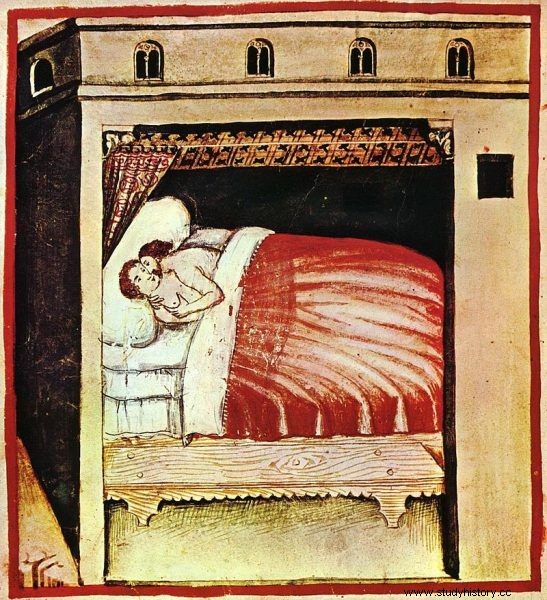Sexual acts - not entirely consistent with the rules of marriage obligation and procreation - were common in the Middle Ages. There is even a place for them in the textbooks for confessors! After all, the pleasure itself was sinful. Especially experienced in the wrong position ...
A few centuries ago, no one had heard of sex education, and the sphere of carnal pleasures was taboo in medieval Europe. But while it was not spoken of loudly and officially, the facts could not be denied. And these looked like this that even pious people did not shy away from intimate situations. In addition, they rarely bothered with top-down rules.
Like all eras, the Middle Ages had no choice but to come to terms with human sexuality. Naturally, it was then the domain of married couples and - by definition - it was intended only for procreation, but it was already noticed then that both men and women had their needs in this matter. Ba! These needs were to be met!
The thirteenth-century canonist Hostiensis emphasized that wives want fulfillment, and husbands are legally and morally obligated to provide it to them (otherwise the woman, as a weak and excitable being, might incline to adultery without even knowing it was a sin).
"A very slight venial sin"
The Church had the most say in this area, which took sex extremely seriously, but, contrary to appearances, did not condemn indulging in carnal pleasures. Or at least - not really. As Frances and Joseph Gies write:
Officially, the Church held that marital intercourse was permitted only for the purpose of procreation. However, the sin of sexual intercourse was not considered too grave as long as conception was not prevented.

Medieval canons emphasized that the husband has a moral and legal duty to satisfy his wife's sexual desires.
In the 12th century, Bishop Huggucio argued that intercourse was associated with pleasure and excitement - and therefore came under sin, but it was only "a very slight venial sin." Many theologians of the time agreed with him that one should not be punished too severely for indulging in lust.
What, then, threatened the lascivious believers? Well, a lot depended on ... the position in which they had sinned. The only correct and permissible position was what is known today as missionary, with the woman lying on her back and under her partner. This was explained by the fact that it symbolized the superiority of men over the fair sex. It was also supposed to promote conception - and that was what it was all about (at least theoretically).
Deviation was treated as an offense against God - and punished according to the scale of the "crime".
Usually it ended in penance with a certain number of fasting days, it was different when the offense was that the partner found the upstairs , another for oral and anal sex, and another for using contraception (for example, in the form of intermittent intercourse).
All this, however, on the condition that the repentant sinner confessed himself. When it comes to "pulling" out of faithful shameful confessions, the priests had their hands tied. Frances and Joseph Gies report:
In textbooks for confessors that began appearing in the late 12th century, efforts were made to avoid naming sins related to sex by name so that the confessor would not involuntarily give parishioners dirty ideas.
The priest, therefore, did not ask about sinful orgasms, but rather delicately and tactfully tried to guide the stray little soul into the right track, so that she would voluntarily reveal her guilt. One of the thirteenth-century books instructed, for example, to translate vaguely:" You are sinning against nature when you experience women differently than nature dictates, ”but it strictly forbade revealing these different techniques. After all, everyone knew the natural ways well…
Source:
Trivia is the essence of our website. Short materials devoted to interesting anecdotes, surprising details from the past, strange news from the old press. Reading that will take you no more than 3 minutes, based on single sources. This particular material is based on the book:
- Frances and Joseph Gies, The Life of a Medieval Woman , Horizon 2019 sign.
